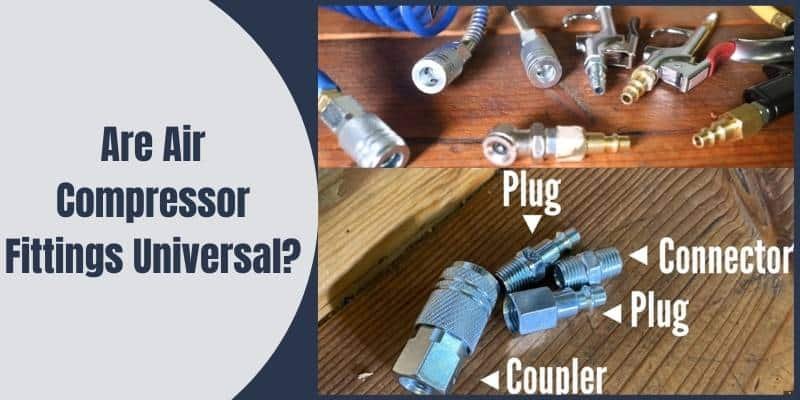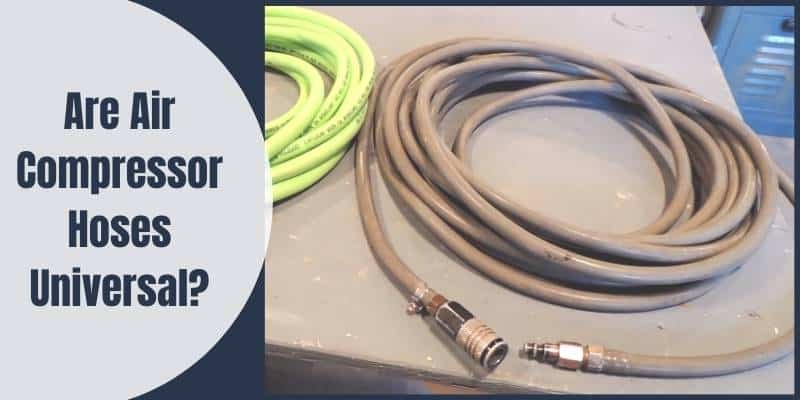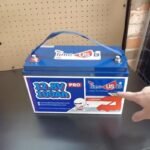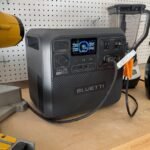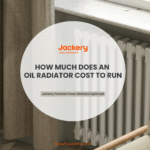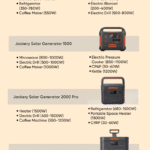Disclosure: This post contains affiliate links and I will be compensated if you make a purchase after clicking through my links. Learn More
Have you ever considered using the compressed air from your air compressor to create a pressure washer? Needless to say, air hoses are an integral part of air compressors to transport air from the unit. They are typically made of rubber and have a 2 inch of diameter. If properly maintained, they usually last longer than garden hoses.
On the other hand, pressure washers are independent units that are connected to the water supply via a garden hose.
You can use your air compressor air hose for a pressure washer. To do that, you’ll need a pressure washer adapter (spray gun) to connect your air compressor’s air hose to the garden hose.
Sounds interesting? Keep reading and you’ll eventually know how to use an air hose for a pressure washer, save some money and space in the garage!

Difference Between Air Hose and Pressure Washer Hose
An air hose is a type of hose used to deliver compressed air to pneumatic tools, while a pressure washer hose is used to deliver high-pressure water for cleaning purposes.
The key difference between the two is the material and pressure capacity. Air hoses are typically made of rubber or polyurethane and can handle lower pressure levels, while pressure washer hoses are typically made of reinforced rubber and can withstand much higher pressure levels.
Tools You Need to Use an Air Hose for Pressure Washer
There are a few things we need to gather in order to use an air hose for a pressure washer. First, we must ensure we have an air compressor that is able to produce air pressure of 40 to 50 PSI consistently. Secondly, we have to have a spray gun that has two inlet facilities. A garden hose will also be needed to connect it to the gun. Lastly, we’ll need to find a faucet to supply and control the water flow.
Type of Fittings You Need for a Pressure Washer
The hose fittings you use for your pressure washer system generally come in two different sizes: 1/4” and 3/8”. 1/4″ hoses are leveled as the smallest and 3/8” hoses as the largest. 3/8” is also the most commonly used hose type.
There is another size of hose which is 1/2 inch. In case you use high-end GPM machines like a 12 gallon per minute and above, you will need 1/2″ hoses. They are not commonly used. In most cases, especially at the starting phases, you will use either a 3/8” or 1/4″ hose.
Read Also: Are Air Hose and Pressure Washer Fittings the Same?
Using an Air Hose for Pressure Washer: Steps Involved
1. Activate the air compressor and wait until the pressure level rises above 30 PSI. Watch the compressor gauge to see it. The system won’t develop enough flow if the pressure level is less than 30 PSI.
2. Locate a faucet outside your house or garage and connect one end of the garden hose to it. This way, you won’t have to rely on your in-house water supply, which can be inadequate for the process.
3. Now connect the spray gun attachment to the opposite end of the garden hose. To achieve better output, connect the lower inlet portion of your spray gun to the garden hose.
4. Next, plug the air hose of your compressor into the upper inlet of the spray gun. Push it and you will hear a snapping sound.
5. Turn the faucet on and your system will be ready to work.
6. Aim the spray gun at the area that needs to be cleaned. Pull the trigger to start the water flow at your pointed location.
7. Watch the water flowing through the garden hose and out of the spray gun. If you think the speed is too low, increase the pressure in your air compressor and pull the trigger again.
Where the two hoses are connected together to the ball valve or a hose connected to your downstream injector, the plug side may get little divots or burrs. This comes from the constant pressure and pull from the trigger. To minimize this, make sure you always disconnect and reconnect these fittings at least once a week.
When the hose fittings start getting hard to disconnect or reconnect, you can either replace them or try to smooth the divots or burrs out. Take a little piece of sandpaper and twist the fittings a few times.
Final Words
Isn’t it nice to combine multiple tools into one? If you have an air compressor already and you don’t want to invest in another tool for pressure cleaning, use the methods outlined above. Unfortunately, this modification will not give you the power of a professional pressure washer (1,300 PSI and beyond), but when compared to a garden hose, it will easily increase (nearly double) the water pressure. You can complete all of your maintenance pressure washing without problems.
Read more: Can You Use Air Hose For Fuel Line?

